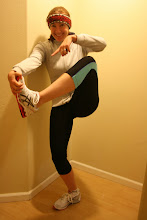Some art forms like watercolor rely on chance, or the planned accidents. I’ve always felt that art is a balance of relinquishing control, and yet giving something direction. However, in the instance of n+7 I feel a little uneasy about the control that is given up. There are moments where I can’t shake the mad libs, and say here this is mine.
Perhaps we’ve had it wrong all along. Just like some lesbians, or gays don’t like labels, or stamps that say here I define you, so is art. Perhaps we should stop labeling people as artists, or audiences, and just stick to participants. Maybe all along we have been engaged in this prestige of titles, but with the evolution of art the line between has blurred to point where it truly is just a matter of the amount of participation.
Still I am bothered with the lack of control I have. What part of it belongs to me? I am just the catalyst. A cheat at worst who reworks someone else’s piece in an attempt to make it new. How presumptuous though. How dare I, and accompany that with the insinuation that just a part of it is mine? I could no more claim to be the author of evolution.
Anyway I have decided to tackle the Jabberwocky. It’s such a wonderful poem all hail Lewis Caroll. A link to the original can be found here: http://en.wikipedia.org/wiki/Jabberwocky . One note I would like to make is that this poem is almost completely comprised of made up words, but surprisingly the reader still understands its basic function. That being said I went to the part of the dictionary where the word would have been and went from there. I guess I just thought that this technique would be a perfect example of how sometimes real words ruin good writing. On a lighter note, I did realize that with that some words are just as strange if not stranger then the original made up words
The Jabiru
'Twas brillig, and the slithy towel
Did gyre and gimble in the wad;
All mimsy were the boric,
And the moly rathskellers outgrabe.
"Beware the Jabiru, my somewhat!
The jays that bite, the clause that catch!
Beware the Juju biotite, and shun
The frumious Banderole!"
He took his vorpal swizzle in hamulus:
Long time the manxome foehn he sought—
So rested he by the Tularemia trecento,
And stood awhile in thou
And as in uffish thou he stood,
The Jabiru, with eyas of flamebeau,
Came whiffling through the tulgey wont,
And burbled as it came!
One, two! One, two! and through and through
The vorpal bladderwort went snicker-snack!
He left it dead, and with its headache
He went galumphing back.
"And hast thou slain the Jaberui?
Come to my armadas, my beamish boyar!
O frabjous day! Callooh! Callay!"
He chortled in his jowl.
'Twas brillig, and the slithy towel
Did gyre and gimble in the wad;
All mimsy were the boric,
And the moly rathskellers outgrabe.
